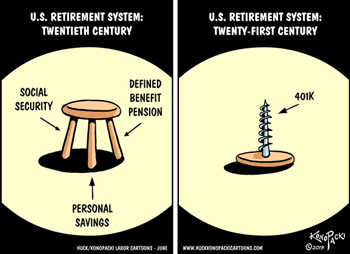Teacher-Turned-Congressman: Rep. Mark Takano's Take on ESEA Rewrite - Politics K-12 - Education Week:
Teacher-Turned-Congressman: Rep. Mark Takano's Take on ESEA Rewrite
Meet Rep. Mark Takano, D-Calif., a two-term congressman who, prior to his election in 2012, spent more than two decades teaching middle and high school.
Takano represents some of California's valley communities in and around Riverside, just east of Los Angeles, where a large portion of the public school students he taught qualify for free- and reduced-priced lunch. The member of the House education committee is well-known for making waves during a heated immigration debate back in 2013, when he hilariously
edited and graded a letter from Republicans that complained about the Senate's immigration reform bill.
Takano is a member of the Congressional Progressive Caucus, a group of the most-liberal House members. He recently chatted with Education Week about his experiences in the classroom. He began as a substitute teacher in and around Boston while earning his bachelor's degree at Harvard University, but spent nearly his entire teaching middle and high school in Rialto, Calif., one of the communities he now serves as a congressman. We also talked about the current reauthorization of the Elementary and Secondary Education Act moving through Congress.
Quick take-aways? Takano favors grade-span testing, supports the federal mandate that states and schools test 95 percent of students, and thinks accountability should be entirely left up to states.
Here is an edited version of our conversation:
Talk a little bit about why you pursued teaching.
Some days I'd be off to work in Brookline [Mass.], which is a well-regarded school district, and other days I'd be taking the [subway] into inner-city Boston where I'd walk through a metal detector. That experience made me rethink going to law school right away and made me think that beginning to address the achievement gap was an important socioeconomic issue to try to gain some perspective on and try to figure out how to solve it. So that experience drove me into teaching.
I resisted initially the idea that I should go through an education school program. After all, I had just graduated from an Ivy League [school], what more did I need to know? But I discovered teaching humbled me a lot. It was far more challenging than I had anticipated.
You had the experience teaching both before Congress passed No Child Left Behind Act—the current iteration of the federal K-12 law—and after. How did things change?
The [requirement that states disaggregate subgroup] data revealed performance gaps and caused us to reassess how we were teaching kids. But as concerns about the sanctions contained in the law grew—the punishments and the accountability system and schools being put on improvement lists—it began to ratchet up the pressure to teach to the test. Initially it was a one-week or one-month type of thing, but it expanded into a semester and then expanded into a full school year that almost became entirely about test preparation.
The high-stakes nature of the annual testing, I think really did teaching and learning a disservice. That type of accountability, I just didn't think it worked. I saw the poor performers being loaded up with more hours of [English/language arts] and math and less access to the kind of subject matter that engages students and help them stay in schools. It became harder as teacher.
Let's talk about the ongoing ESEA reauthorization. How is it panning out from your perspective?
In large part, I want to see a reduced federal accountability component of ESEA. Both the House and Senate bills do that.
I would prefer to see [annual testing] ratcheted back to grade-span testing. I don't think we need to be testing every year. My concern is that some states will misuse the data and construe it to mean that annual testing can infer teacher performance, and I don't think that's right. Ultimately, I can live with the annual testing mandate mainly because the high stakes have been taken out, at least at the federal level. More than that, I am interested in clean, valid data.
What do you think about the provision in the House ESEA bill that would ensure the rights of students to opt out of testing?
I think there is a benefit to be gained by saying at least 95 percent of your students must be tested, and if you don't we should withhold federal money from you. Parents, teachers, and students all have the right to know how well a school is doing, how well a school district is doing. We have to be more humble at the federal level and say we don't know how to do more accountability. What we can do is insist that students are assessed and states use good-quality tests, and we don't over-test.
What do you think about the demands being made by Democrats and the civil rights community to add stronger accountability language to a final ESEA rewrite?
The devil is in the details. I think it's not too unfair to say let's just clean the slate as far as what we're going to hold low-performing schools accountable for. It's all relative. I can understand parents of disabled students, students who are low-income and minority, their concerns that school districts will ignore them. But to have an entire school labeled a failure because a subgroup isn't meeting the target, that gets real tricky in terms of how we define that. I just don't know if we can get there in a conference committee.
What would a perfect ESEA reauthorization look like to you?
My perfect bill would be: Let's fully fund Title I and not block grant it. I would keep in place the schoolwide program threshold so that you can't dilute the money if you have less than 40 percent of Title I students in a school. I wouldn't have portability, and wouldn't allow [Title I dollars] to follow kids into the private school setting. I would emphasize charter schools really should be returned to their original idea. They're not there to create competition more than they are to be places of experimentation from which the conventional schools are able to learn from. I would ensure we increase money for magnet schools. I would put incentives in for school districts to take a look at concurrent and dual-enrollment programs, early-college high schools, and ways in which career and technical pathways could be introduced much earlier.
What odds do you give the conference process?
I feel good because the Senate bill came out of committee with unanimous support. It's largely something I could vote for if it came straight to the House. If the Senate bill passes with large numbers and comes to conference with momentum, I think the poison pills in the House bill can be taken out. There will be a lot of Republicans that won't like a watered down bill, but I believe there is a majority coalition of Republicans and Democrats who will likely vote for the reauthorization. The more that it resembles the Senate bill, the larger the chance we have of getting ESEA reauthorization through.
Teacher-Turned-Congressman: Rep. Mark Takano's Take on ESEA Rewrite - Politics K-12 - Education Week:





















